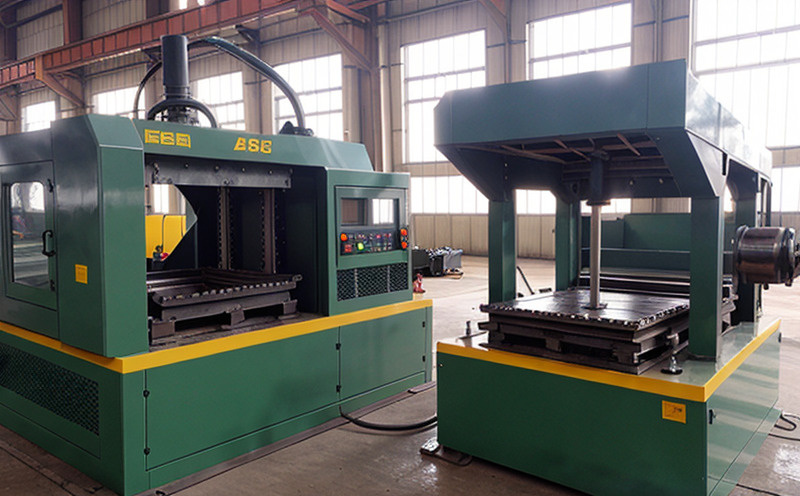ASTM A604 Macroetch Testing of Forged Steels
The ASTM A604 standard specifies the requirements for carbon and low-alloy forged steels used in pressure vessels, pipelines, and other applications where mechanical integrity is critical. Macroetch testing (MT) is a key method outlined in this standard to ensure that the microstructure of these materials is properly formed during the forging process.
Macroetch testing involves etching a specimen surface with an appropriate chemical solution and then examining it under a low-power microscope or loupe for indications of proper grain structure, segregation, and other defects. This non-destructive technique provides valuable information about the internal quality of the forgings without compromising their integrity.
The process begins by selecting a representative sample from the batch of forged parts. The chosen specimen is then cleaned to remove any surface contaminants that could interfere with the etching process. Following cleaning, the specimen is etched using an appropriate solution designed to reveal the internal grain structure. Common etchants include nital (nitric acid and alcohol) or a ferric chloride solution.
After etching, the specimen is examined under magnification to assess its macrostructure. The examiner looks for uniformity in grain size and distribution as well as any signs of internal defects such as non-metallic inclusions, segregation bands, or porosity. These observations help ensure that each forging meets the stringent requirements set forth by ASTM A604.
For quality managers and compliance officers responsible for ensuring product safety and reliability, macroetch testing plays a crucial role in verifying adherence to industry standards like ASTM A604. By conducting this test, manufacturers can demonstrate their commitment to producing high-quality forgings that meet or exceed regulatory requirements.
R&D engineers also benefit from macroetch testing as it provides insights into the effects of different forging parameters on material properties. Understanding how variables such as temperature, time, and pressure influence grain growth and defect formation helps optimize manufacturing processes for better product performance.
Procurement professionals can use the results of these tests to make informed decisions regarding supplier selection and contract negotiations based on demonstrated compliance with relevant standards.
Benefits
- Compliance Assurance: Ensures that forged parts meet the stringent requirements of ASTM A604, thereby avoiding potential non-compliance issues and associated penalties.
- Quality Control: Provides early detection of defects which can be addressed before further processing or assembly, reducing rework costs.
- Enhanced Product Reliability: By confirming that the forgings have the correct grain structure and lack harmful defects, macroetch testing contributes to longer-lasting products with improved safety margins.
- Maintains Reputation: Demonstrating adherence to recognized standards enhances a company’s reputation among customers and stakeholders.
International Acceptance and Recognition
The ASTM A604 standard is widely accepted across various industries worldwide, including oil & gas, petrochemicals, power generation, and aerospace. Its rigorous requirements ensure that forged components used in these sectors are reliable and capable of withstanding harsh environments.
Many international standards organizations recognize the validity and reliability of ASTM A604 macroetch testing methods. For instance, ISO 9001 certification processes often incorporate macroetch as part of their quality assurance protocols. Similarly, ASME (American Society of Mechanical Engineers) codes frequently reference ASTM A604 when specifying material requirements for pressure-containing equipment.
Recognition by such bodies underscores the importance and acceptance of ASTM A604 in global markets. Companies that adopt these practices gain an edge in international trade negotiations and are better positioned to compete effectively in demanding industries.
Competitive Advantage and Market Impact
Adopting ASTM A604 macroetch testing can provide significant competitive advantages for manufacturers of forged components. By ensuring that each part meets the highest quality standards, companies can:
- Win Competitive Bids: Consistent compliance with recognized standards enhances a company’s credibility and increases its chances of winning contracts.
- Avoid Legal Risks: Non-compliance can lead to costly lawsuits or product recalls; adherence to ASTM A604 minimizes these risks.
- Increase Customer Confidence: Transparent quality control measures build trust with customers and end-users, fostering long-term relationships.
The impact extends beyond individual companies. By promoting higher overall standards within the industry, ASTM A604 contributes to safer, more reliable infrastructure across various sectors. This collective improvement benefits everyone involved in manufacturing and using forged components.





